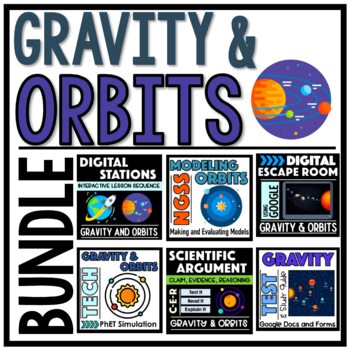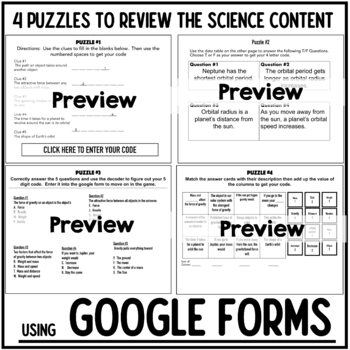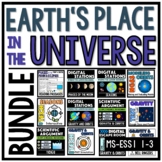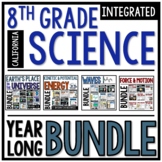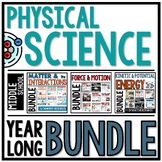Gravity and Orbits in the Solar System Bundle For Middle School
- Zip
- Google Apps™

What educators are saying
Products in this Bundle (8)
showing 1-5 of 8 products
Bonus
Also included in
- This bundle focuses on the middle school NGSS Earth and Space science standards related to Earth’s place in the universe. The unit begins with an introduction to gravity and the factors that affect the force of gravity. The unit’s main focus is on the relationship between gravity and the planets’ orPrice $29.40Original Price $42.00Save $12.60
- Get this year long comprehensive Middle School Earth Science Bundle, designed for teachers looking for effective resources to teach weather, climate, plate tectonics, space science and more! This bundle is perfect for the entire school year, providing a diverse range of activities and experiments tPrice $181.30Original Price $259.00Save $77.70
- Teaching is hard! Make things easier with this bundle that has everything you need for the full year. This year long bundle includes everything you need to teach a middle school level course that meets the NGSS 8th Grade integrated standards for California. This bundle contains a variety of engagiPrice $185.00Original Price $252.50Save $67.50
- Teaching is hard! Make things easier with this complete year long curriculum that has everything you need to teach a full year of physical science . This year long bundle includes everything you need to teach a middle school level course that meets the NGSS physical science standards for. This bundlPrice $179.20Original Price $256.00Save $76.80
Description
The unit starts with an introduction to gravity and the factors that affect the force. The unit’s main focus is on the relationship between gravity and the planets’ orbits around the sun. There are a combination of hands on activities, guided notes, and review in the lesson sequence.
What's Included?
- Gravity and Orbits Digital Stations - Sequence of lessons including: Interactive lesson using videos, readings, interactive activities, review questions, and a self grading google quiz.
- Modeling orbits - Students use an object on a string to model orbits and compare their orbits to the planets in the solar system. The students evaluate their models to compare, contrast, and improve their models.
- Weight on Other Planets Activity - Students calculate weight on other planets and learn about factors that affect the force of gravity
- Planetary DATA CER - students gather data about the solar system and use this to write a CER argument about the relationship between distance from the sun and orbital period.
- Orbits PhET online simulation - students complete an online simulation about the factors that affect gravity and orbits.
- Gravity and Orbits Digital Bell Ringers - 10 different bell ringers to start your class using google forms.
- Gravity and Orbits Digital Escape Room - fun engaging group review using digital locks that open when students solve each set of questions.
- Gravity and Orbits Study Guide and Test - editable study guide and test to review and assess students learning. Test uses a self grading google form.
All resources are designed to be engaging, interactive, and aligned with NGSS standards. Each resource includes teacher notes for implementation.
MS-PS2-4.Construct and present arguments using evidence to support the claim that gravitational interactions are attractive and depend on the masses of interacting objects.
MS-ESS1-2.Develop and use a model to describe the role of gravity in the motions within galaxies and the solar system.
MS-ESS1-3. Analyze and interpret data to determine scale properties of objects in the solar system.

